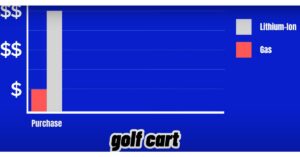Why are golf balls so expensive?
Have you ever wondered why golf balls come with such a hefty price tag? Well, get ready to tee off with some fascinating insights! Golf balls may seem like small, lightweight objects, but their cost can be surprisingly high. So, why are golf balls so expensive?
Golf balls are expensive because their high price reflects the substantial investments made in advanced technology and intricate design. Manufacturers prioritize research and development to enhance performance aspects like distance, accuracy, and durability, providing golfers with a competitive edge.
Curious to learn more about how these technological advancements impact your swing? In this blog post, we’ll explore the key features that contribute to a golf ball’s cost. From aerodynamics to compression rates, we’ll break down the science behind these little spheres of excellence.

Key Takeaways
- Advanced technology and materials drive up the cost of golf balls.
- Extensive research and development contribute to their high price tag.
- Quality construction ensures durability, enhancing performance on the course.
- Brand reputation and marketing strategies also play a role in pricing golf balls.
Why are golf balls so expensive?
Golf enthusiasts often wonder why golf balls come with such a hefty price tag.
The answer lies in the intricate design and advanced technology that goes into manufacturing these small but crucial components of the game.
To understand why golf balls are expensive, let’s delve into some key factors:
Research and Development
Golf ball manufacturers invest significant resources in research and development to enhance performance.
They constantly strive to improve aerodynamics, spin control, distance, and feel. This ongoing innovation contributes to the higher cost.
Premium Materials
Golf balls are made using high-quality materials like urethane or Surlyn for their covers and various layers beneath. These materials offer durability, control, and desired characteristics during play but come at a higher cost compared to lower-grade alternatives.
Manufacturing Complexity
Producing golf balls involves complex processes that require precision machinery. From molding cores to applying multiple layers and covers, each step demands meticulous attention to detail. Maintaining consistent quality throughout production adds to the overall expense.
Golf Ball Varieties
Manufacturers offer a wide range of golf ball options tailored for different playing styles and skill levels.
Whether it’s distance-focused balls or those designed for increased spin around greens, catering to diverse player preferences leads to a wider product lineup with varying price points.
How Are Golf Balls Manufactured?
Golf balls may seem like simple objects, but their manufacturing process involves a careful combination of science and precision engineering. Let’s take a closer look at the step-by-step journey of how golf balls are made:
Core Formation
The manufacturing process begins with the creation of the inner core, which is typically made from a mixture of rubber compounds. These compounds are carefully measured and blended to achieve the desired density and hardness.
Compression Molding
Once the core material is prepared, it undergoes compression molding. This involves placing the core material into a mold cavity and subjecting it to high pressure and heat. The result is a solid spherical core with consistent dimensions.
Outer Layer Application
Next comes the application of various layers that provide different performance characteristics to the golf ball. Typically, two or three additional layers are added over the core using specialized machinery.
Dimple Creation
One iconic feature of golf balls is their dimples, which help optimize flight performance by reducing drag and increasing lift.
To create these dimples, manufacturers use a specially designed machine that presses small depressions onto the surface of each ball.
Finishing Touches
After all layers have been applied and dimples created, any excess material is trimmed off to ensure uniformity in size and weight across all manufactured golf balls.
Quality Control
Finally, each golf ball goes through rigorous quality control checks to ensure it meets industry standards for performance and durability. This includes testing factors such as compression level, spin rate, distance traveled, and overall consistency.
What Factors Contribute to the Cost of Golf Balls?
Golf balls, like any other product, have varying price ranges depending on several factors. These factors include the brand reputation, materials used in manufacturing, construction quality, and additional features.
Let’s take a closer look at each of these elements to understand how they contribute to the cost of golf balls.
Brand Reputation
One significant factor that influences the cost of golf balls is the brand behind them. Well-established brands with a longstanding reputation for producing high-quality products often charge a premium for their golf balls.
This higher price reflects not only the reliability and performance associated with reputable brands but also their investment in research and development.
Materials Used
The materials used in making golf balls play a crucial role in determining their cost. Two common types of covers are typically found on golf balls: Surlyn and urethane.
Surlyn-covered balls tend to be more affordable as they offer durability and distance but may lack some advanced performance characteristics.
On the other hand, urethane-covered balls are known for providing better control and feel around greens but come at a higher price due to their superior craftsmanship.
Construction Quality
Another aspect that affects the cost of golf balls is their construction quality. Higher-priced options often feature multi-layered designs that aim to optimize various aspects such as distance off the tee or spin around greens.
These intricate constructions require precise engineering techniques and meticulous attention to detail during production, resulting in increased manufacturing costs.
Additional Features
Some golf ball models come with additional features designed to cater to specific player preferences or enhance certain aspects of gameplay.
For example, certain brands offer specialized dimple patterns or aerodynamic designs intended to reduce drag and increase ball flight stability – features that can elevate prices slightly compared to basic models.
Additionally, balls marketed as “tour-level” or “professional-grade” tend to have higher price tags due to their focus on delivering exceptional performance for skilled players.
Are Expensive Golf Balls Worth the Price?
Yes, expensive golf balls can be worth the price depending on your skill level and playing style. While it is true that high-end golf balls come with a heftier price tag, they often offer superior performance and durability compared to their cheaper counterparts.
Improved Distance
Expensive golf balls are engineered using advanced technology to maximize distance. They typically have a higher compression core, which allows for greater energy transfer upon impact, resulting in longer shots off the tee.
Better Control
High-quality golf balls tend to provide better control over spin and trajectory. This can be particularly advantageous when executing delicate shots around the green or shaping your ball flight according to course conditions.
Durability
Premium golf balls are designed to withstand more rounds of play without significant wear and tear.
Their construction materials and manufacturing processes make them less prone to scuffs or cuts from normal use, ensuring they maintain their performance characteristics for longer periods.
Affordable Alternatives to Expensive Golf Balls
Looking for budget-friendly options when it comes to golf balls? You’re in luck! There are several alternatives available that won’t break the bank, allowing you to enjoy your game without compromising on quality.
Here are some affordable alternatives worth considering:
Recycled Golf Balls
These balls have been retrieved from water hazards or rough areas of golf courses, cleaned, and restored to a playable condition. They offer a cost-effective solution without sacrificing performance.
Value Brand Golf Balls
Many reputable brands offer value or budget lines of golf balls that provide excellent performance at a lower price point.
While they may not have all the features of their high-end counterparts, they still deliver decent distance and control.
Used Golf Balls
Purchasing used golf balls can be an economical choice if you don’t mind minor cosmetic imperfections. These balls are often sold at discounted prices but still perform well on the course.
Soft Compression Golf Balls
Typically priced more affordably than high-compression balls, soft compression golf balls offer a great compromise between distance and feel. They can be an ideal option for beginners or those looking for extra forgiveness.
Non-Premium Golf Ball Models
Most major brands release new premium models each year, which means previous versions become more affordable over time. These non-premium models still boast impressive performance characteristics while being easier on your wallet.
FAQs
What factors contribute to the high cost of golf balls?
The materials used in golf ball construction, such as multi-layered designs and advanced core technologies, significantly impact their price. Additionally, the research and development required to improve performance and durability also contribute to the overall cost.
How does branding affect the price of golf balls?
Golf ball manufacturers invest heavily in marketing and branding efforts, which can increase the cost of their products. Well-known brands often command higher prices due to their reputation for quality and performance.
Are there any technological advancements that make golf balls expensive?
Yes, advancements like aerodynamic dimple patterns or specialized cover materials enhance a golf ball’s performance but also increase its production costs. These innovations require extensive research and testing before they are implemented into manufacturing processes.
Does demand play a role in the high price of golf balls?
The popularity of golf as a sport contributes to increased demand for quality equipment including golf balls. As demand rises, manufacturers may set higher prices due to market dynamics and consumer willingness to pay for premium products.





![Do Golf Tees Make A Difference? [Know Your Gears] Do-Golf-Tees-Make-A-Difference](https://giftedgolfers.com/wp-content/uploads/2023/05/Do-Golf-Tees-Make-A-Difference-300x157.jpg)
